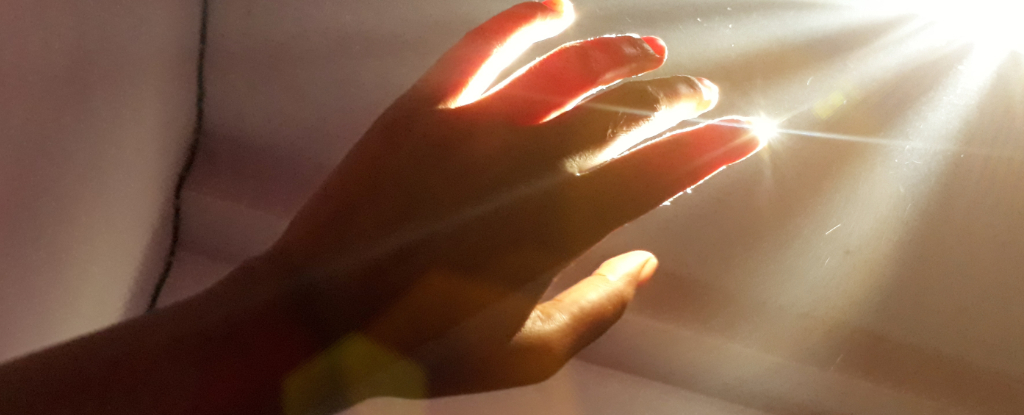
Life truly is radiant, according to a groundbreaking experiment conducted by researchers from the University of Calgary and the National Research Council of Canada. This extraordinary study on mice and plant leaves has uncovered direct physical evidence of an eerie ‘biophoton’ phenomenon that ceases upon death, suggesting that all living things, including humans, could literally glow with health—until they don’t.
The findings, while seemingly fringe at first glance, challenge the boundaries of conventional science. It’s difficult not to associate such investigations into biological electromagnetic emissions with debunked and paranormal claims of auras and discharges surrounding living organisms. However, this study provides a scientific basis for these emissions, offering a new perspective on the phenomenon.
The Science Behind Biophotons
Biophotons, or ultraweak photon emissions (UPE), are a controversial topic within the scientific community. Various biological processes are known to generate bright displays of light through chemiluminescence. For decades, spontaneous light waves ranging from 200 to 1,000 nanometers have been recorded from less obvious reactions among a diverse array of living cells, from cow heart tissue to bacterial colonies.
A strong contender for the source of this radiation is the effect of reactive oxygen species produced by living cells when stressed by heat, toxins, pathogens, or nutrient deficiencies. For instance, hydrogen peroxide can cause fats and proteins to undergo transformations that energize their electrons, resulting in the emission of photons as they return to their normal state.
Experimental Evidence
To explore whether this process could be observed in whole living subjects, researchers employed electron-multiplying charge-coupled device (EMCCD) and charge-coupled device (CCD) cameras to compare emissions from whole mice—both alive and deceased. Four immobilized mice were placed in a dark box and imaged for an hour, then euthanized and imaged for another hour. The mice were maintained at body temperature post-mortem to eliminate heat as a variable.
The researchers successfully captured individual photons in the visible light band emitted by mouse cells before and after death. A significant drop in UPE was observed after euthanasia, demonstrating a clear distinction between living and non-living states.
Implications for Medical and Agricultural Research
Having a means of remotely monitoring the stress of individual tissues in humans, animals, or even crops could provide medical specialists and agricultural technicians with a powerful, non-invasive diagnostic tool. This could revolutionize how we assess health and stress in living organisms, offering insights into conditions that might otherwise go undetected.
The experiment extended to plant species, including thale cress (Arabidopsis thaliana) and dwarf umbrella tree (Heptapleurum arboricola), where stressed plants exhibited a significant increase in photon emissions. “Our results show that the injury parts in all leaves were significantly brighter than the uninjured parts during all 16 hours of imaging,” the researchers reported.
Future Directions and Speculations
This research encourages speculation that the faintest ethereal glows produced by stressed cells could one day indicate radiant health. The potential applications in medical diagnostics and agricultural monitoring are vast, offering a new dimension to understanding biological processes and stress responses.
Published in The Journal of Physical Chemistry Letters, this study opens the door to further exploration of biophoton emissions and their implications. As science continues to unravel the mysteries of life and death, such discoveries remind us of the complex and often unseen phenomena that define living organisms.
An earlier version of this article was first published in May 2025.





